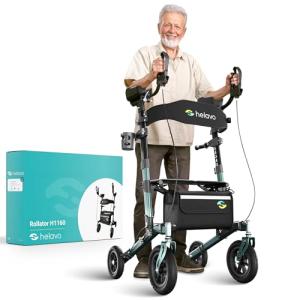What Is Easy-To-Use Walker And Why Are We Speakin' About It?
The Ultimate Guide to Easy-To-Use Walkers: Empowering Mobility for All
Mobility is a fundamental aspect of everyday living, and for lots of individuals, particularly the elderly and those with mobility obstacles, walkers can substantially boost independence and safety. An easy-to-use walker can be the difference in between depending on assistance and regaining autonomy. This post aims to explore different kinds of walkers, their features, and how individuals can pick the right walker according to their needs.
Understanding Walkers: Types and Features
Walkers come in a number of styles customized to specific requirements, levels of mobility, and individual preferences. The following table sums up the most typical kinds of walkers, their features, and prospective advantages.
Walker Type
Description
Benefits
Standard Walker
A lightweight, standard frame with four legs.
Deals stability and support; easy to maneuver.
Two-Wheeled Walker
Features two wheels at the front for easy mobility.
Supplies support while allowing for smoother movement.
Four-Wheeled Walker
Likewise called a rollator, it has four wheels.
Permits greater mobility and includes a seat for resting.
Knee Walker
Designed for individuals with foot or ankle injuries.
Enables users to rest weight on the knee while sliding with the other leg.
Chair Walker
Integrates a walker with a seat and storage.
Supplies benefit for longer ranges; great for resting.
Foldable Walker
Can be folded for easy transport and storage.
Portability makes it perfect for travel.
Factors to Consider When Choosing a Walker
Selecting the right walker is crucial for making sure safety and comfort. Below are crucial aspects to consider:
Mobility Level: Assess the user's present mobility and balance. Those who need optimum stability might take advantage of a standard walker, while more mobile users may choose a rollator.
Weight Capacity: Walkers are created with particular weight limits. Constantly examine the producer's standards to ensure safety.
Height Adjustment: An appropriately fitted walker is essential for convenience. Try to find adjustable height alternatives to ensure it fits the user's stature.
Surface area Type: Consider where the walker will primarily be utilized. Some walkers are better fit for outdoor use, while others might function best on carpets or inside your home.
Storage Needs: If the user frequently carries personal items, walkers with baskets or trays may be useful.
Additional Features to Look For
Walkers have actually developed to consist of various features focused on improving user experience. Some notable features consist of:
Hand Grips: Ergonomically developed hand grips contribute to comfort and manage.
Brakes: For rollators, look for reliable brakes which supply included security when slowing down or stopping.
Weight: Lightweight materials enhance maneuverability and ease of transport.
Seat and Backrest: For users who might require to rest, alternatives with seats and backrests offer much-needed support.
Devices: Consider extra products like trays, baskets, or lights that can enhance walker functionality.
The Benefits of Using a Walker
Picking an easy-to-use walker can bring many advantages for users and caregivers alike:
Increased Independence: Walkers lower dependence on others, empowering users in their day-to-day routines.
Improved Safety: They supply important support and balance, reducing the risk of falls and associated injuries.
Boosted Mobility: Walkers enable people to preserve mobility even with restricted physical abilities.
Activity Encouragement: Using a walker can motivate users to engage in regular movement, promoting overall health.
Social Interaction: Increased mobility encourages users to take part in social activities, improving emotional well-being.
Frequently asked questions about Walkers
1. How do I know which walker is ideal for me?
Choosing the best walker involves assessing your mobility needs, weight capacity, and personal preferences. Consulting with a health care expert can likewise offer important insights.
2. Are walkers covered by insurance coverage?
Numerous insurance plans, including Medicare, will cover walkers if they are deemed clinically essential. It's best to contact your strategy for particular protection information.
3. How can www.mymobilityscooters.uk keep my walker?
Routine upkeep consists of inspecting wheels and brakes for damage, cleaning the frame, and checking rubber tips for wear.
4. Can I use a walker outdoors?
Yes, there specify walkers developed for outdoor usage, such as four-wheeled rollators, which use greater stability on various surface areas.
5. What is the common weight limitation for walkers?
Weight limits can vary widely depending upon the design and producer. Most basic walkers support as much as 300 pounds, however it's vital to check specific specifications.
Conclusion: Choosing the Right Walker for Enhanced Mobility
An easy-to-use walker is more than just a tool; it represents self-reliance and dignity for countless users. Whether it's a lightweight basic walker, a feature-rich rollator, or a specialized knee walker, the choices are large and diverse. By understanding the various types of walkers offered, thinking about essential features, and recognizing the considerable benefits they supply, individuals can make informed decisions that line up with their requirements.
Keep in mind, while this guide functions as a fundamental resource, it is always recommended to speak with a health care specialist for individualized recommendations. By picking the best walker, individuals can actively take part in life, maintain their mobility, and pursue their passions without limitation.
